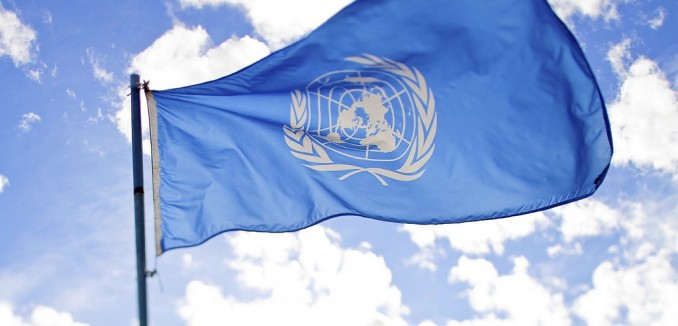The UN’s Office for the Coordination of Humanitarian Affairs (OCHA) is hardly an outlet of Israeli hasbara. Indeed, the headline finding of its latest “Fragmented Lives: Humanitarian Overview 2015” report makes its stance on the Israeli-Palestinian conflict quite plain: “the Israeli occupation,” says the press release, “is the “main trigger of humanitarian needs among Palestinians in the occupied Palestinian territory.” But behind the main bullet points disseminated to the press, the report demonstrates a discernible willingness to recognize Israel’s case and welcome its positive steps, revealing a considerably more nuanced and complex picture of the situation than the one in the press release or foreword.
Palestinian casualties did not occur in a vacuum, acknowledges the report, but were inextricably linked to an upswing in Palestinian violence. The rise in Palestinian casualties is explicitly labelled as “a consequence” of the “sharp rise in stabbing, ramming, and shooting attacks by unaffiliated Palestinians against Israeli civilians and forces, and widespread clashes.” The report acknowledges that 23 civilians and two members of the Israeli security forces were killed in 2015, observes that this is the highest since OCHA’s records began in 2005, and repeats the UN Secretary General’s “unreserved” condemnation” of such violence. Meanwhile, the report recognizes that “most Palestinian fatalities… were suspected perpetrators of attacks or alleged attacks on Israelis,” rather than innocent victims of Israeli aggression. It further adds that “the absolute majority of Palestinian injuries occurred during clashes,” hinting that the IDF used force when its soldiers came under attack rather than arbitrarily. OCHA records thirty children killed by the military and settlers, and highlights that two-thirds were involved in “attacks and alleged attacks,” again refuting obscene allegations that Israel has a policy of killing children.
The report gives Israel ample credit for positive steps. It acknowledges the decline in incidents of settler violence and attributes this to “measures adopted by the Israeli authorities”; it also mentions that, according to Justice Ministry figures, the rate of indictment has risen. Complaining of demolitions of Palestinian structures, it publishes without comment the Israeli view that “these demolitions are a legitimate law enforcement measure against structures built without the required permit”; moreover, it notes that the number of structures and number of people displaced as a result declined substantially compared to 2014. With regards movement and access, OCHA acknowledges that “in recent years, the Israeli authorities have eased some long-standing restrictions in the West Bank, improving Palestinian access to key urban hubs,” and notes that Israel had removed temporary checkpoints and roadblocks deployed at the height of the recent surge of Palestinian violence.
Likewise in Gaza, OCHA is not blind to Israel’s version of events. It introduces the chapter on movement and access by noting that “2015 was marked by a continuation of the relaxations introduced by the Israeli authorities in the aftermath of the 2014 hostilities.” It credits Israel with “facilitat[ing] the entry of construction materials for the repair of damaged homes,” and says the introduction of a “residential stream” in the Gaza Reconstruction Mechanism “resulted in a significant increase in the number of trucks entering Gaza” with materials. This, alongside a “significant increase” in trade through Kerem Shalom, too, thanks to Israel’s expansion of the crossing and multiple revisions of the “dual use” list of restricted goods to permit freer import of gravel. Crucially, it notes the new Israeli policy of permitting the export of goods from Gaza to Israel, the first time since 2007, leading to a six-fold increase in exports over the previous year.
OCHA blasts the naval blockade as “a form of collective punishment of the civilian population,” but notes Israel’s expansion of the fishing zone, alongside the doubling in the number of Palestinians permitted to transit through the Erez Crossing. And it observes that Israel’s suspension of cement deliveries to the private sector in Gaza occurred “following the diversion of cement from its legitimate beneficiaries” and the discovery of a cross-border tunnel.
OCHA is hardly known for its friendliness towards Israel. Absurdly, its maps depict the Jewish Quarter of the Old City of Jerusalem as a “Jewish settlement” and the Temple Mount as a “Palestinian community.” Last year, watchdog NGO Monitor accused it of “regularly present[ing] data in a manipulative way that erases the context of terrorism and distorts law and morality.”
Yet, OCHA’s ability to praise Israel where due, but bury this within an overall negative packaging, points to the leeway the agency retains in crafting its narrative. The framing of the situation by the international community is indicative of the extent to which it wishes to positively engage Israel, by demonstrating that changes in policy bring a corresponding change in its relationship with world actors, or conversely to add to the anodyne chorus of opprobrium.
Two years on from Operation Protective Edge, nothing compelled OCHA to present dramatic pictures of rubble in Gaza, when it could have used pictures of any one of the one-hundred-thousand-plus homes repaired since the war with cement delivered through Israeli crossings. The information is presumably in OCHA’s hands; how it chooses to frame it is, from this fresh evidence, very much a matter of discretion.
Eylon Aslan-Levy is an Israeli news anchor and political commentator. He is a graduate of Oxford, Cambridge and the IDF.
[Photo: sanjitbakshi / Flickr]




